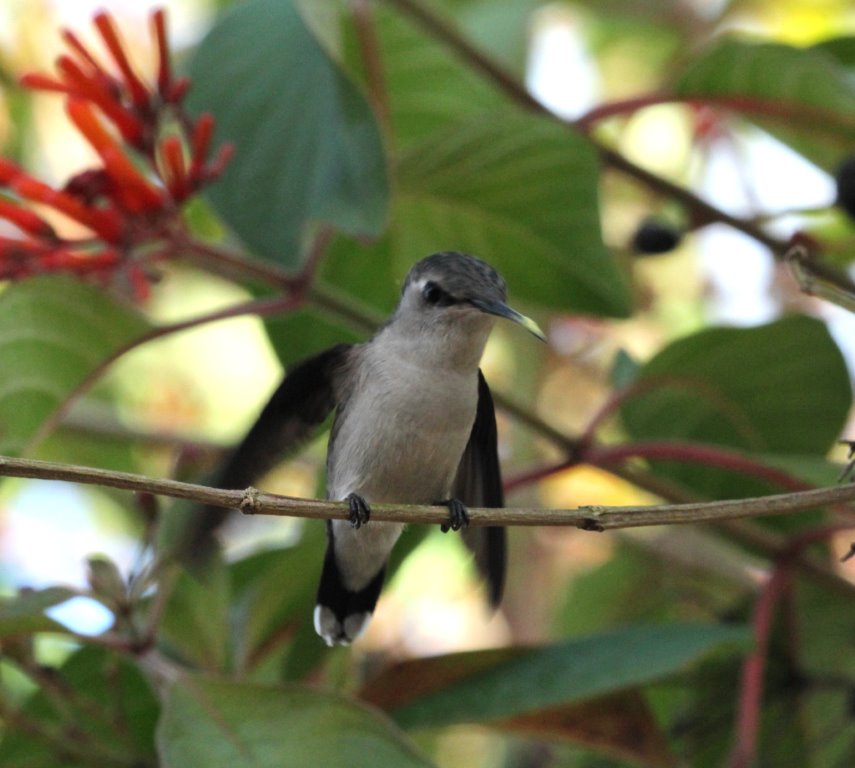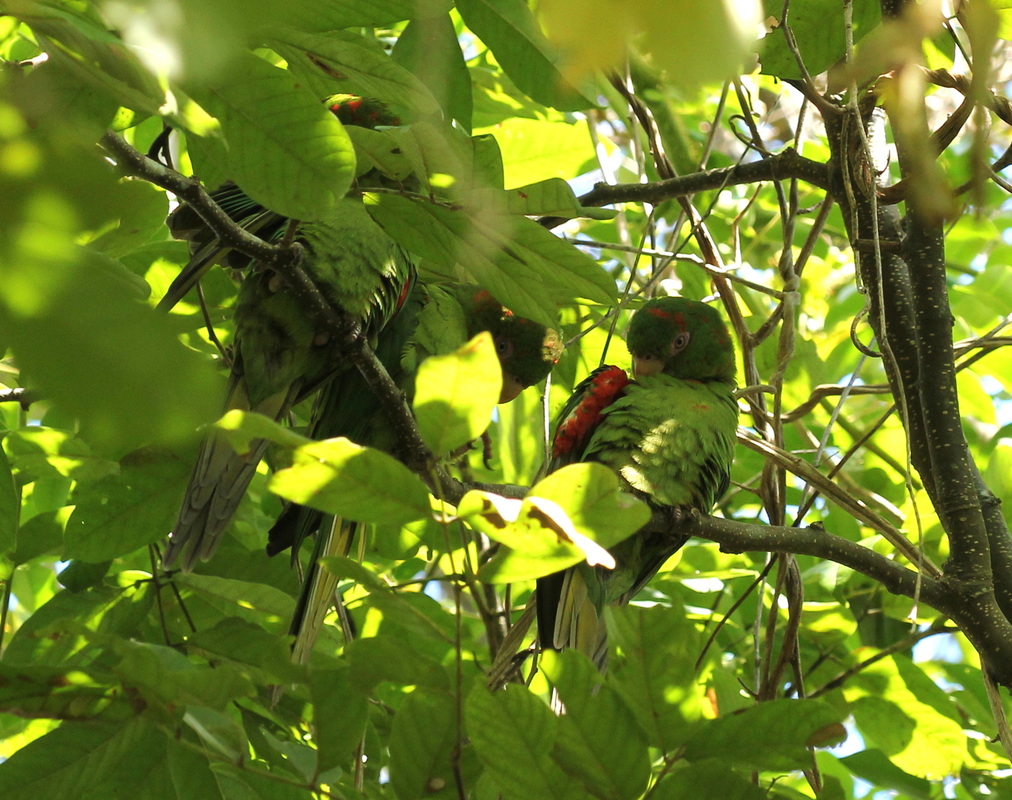We had the use of a local bird guide who on the first day managed to show us Stygian Owl, Blue-gray Gnatcatcher, Bare-legged Screech-owl, Cuban Pygmy-owl, Cuban Lizard-cuckoo, Grey-headed Quail-dove and lots of the more usual things as well.
|
Zapata is the richest single area for birds in Cuba. It contains a wide range of habitats from swamp, mangroves, shallow saline lagoons and coastal thickets to semi-deciduous forest and dry evergreen forest and some rice paddies thrown in for good measure. It is therefore also good for butterflies though I must say the majority of our time was spent birding. We had the use of a local bird guide who on the first day managed to show us Stygian Owl, Blue-gray Gnatcatcher, Bare-legged Screech-owl, Cuban Pygmy-owl, Cuban Lizard-cuckoo, Grey-headed Quail-dove and lots of the more usual things as well. One morning we drove out to the tidal flats lined with mangroves at La Salina on the south shore of Zapata. It was a very long bumpy drive (and back) but the photo opportunities in the poor light were not great though we did see quite a lot of birds including Cuban Black-hawk. An early morning visit to the forest produced Key West Quail-dove and Zenaida Dove along with Ovenbird but not a great deal else though we later saw Cuban Parakeet too. One of the real highlights here at Zapata was being taken by our guide to a garden adjacent to the forest where both Cuban Emerald and Bee Hummingbird (the smallest bird in the world) were regularly seen nectaring on the flowers on this tree, and we were not disappointed. The lady who lived there was going to chop the tree down as it took so much light and was in the way in her tiny garden but she agreed not to when it was learnt that Bee Hummingbirds regularly used it. In return she is paid a commission by the guides that take their clients there. This, along with the Cuban Tody, were the two main birds that drew me to Cuba in the first place. We spent a magical hour in this kind lady's garden with both males and females sometimes only a few feet away. We also started to recognise the commoner species of butterfly at a glance including White Peacock, Gulf Fritillary, Tropical Checkered Skipper and the Malachite. We saw a few new butterflies in the area and a new moth very similar to the Crimson Speckled that we get here in Europe but with pink instead of white hindwings. It is called Utetheisa ornatrix.
0 Comments
Leave a Reply. |
Welcome to our Blog
Here we will post interesting news about what we and others have seen in Cuba. Archives
March 2024
Categories |














 RSS Feed
RSS Feed